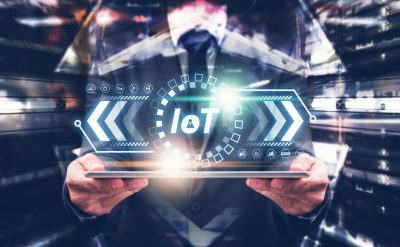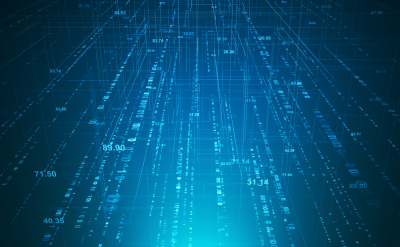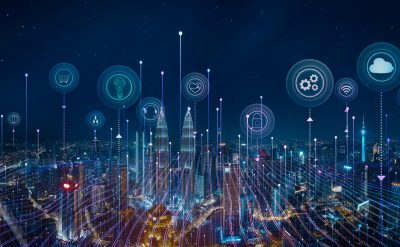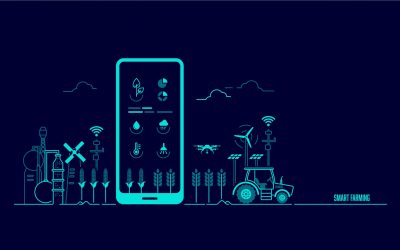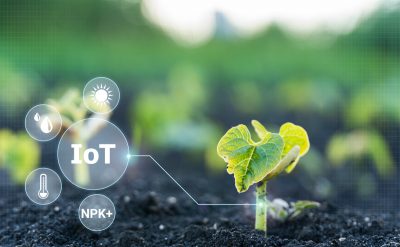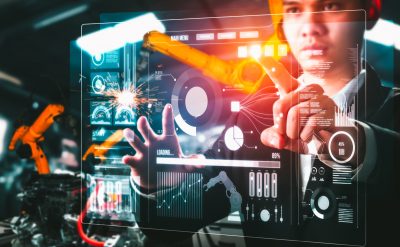Highlights:
- Why pure cloud computing is not the best solution for the IoT? Traditional cloud computing has a number of drawbacks when it comes to IoT.
- The benefits and real-life use cases for edge computing in IoT
Edge computing complements several prominent technologies, including hybrid cloud and 5G. It is also perfect for Internet of Things (IoT) applications and devices, allowing for faster analysis and processing, speeding up and improving the overall process. In fact, edge computing and IoT are increasingly interdependent and will continue to do so for a considerable time.
According to some studies, about 59% of IoT installations will use edge computing to process data by 2025. These assumptions are premised on the significant benefits offered by edge computing, including faster reaction times, more security, and more efficient utilization.
The fact is that edge computing is no longer a novel concept; it has already started producing results. Whether you want to optimize existing products or build IoT apps, edge computing can help you gain a competitive advantage.
Let’s learn more about edge computing, its advantages, and its real-life use cases.
Why pure cloud computing is not the best solution for IoT
The cloud has opened up the world of IoT to an entirely new audience. However, as its popularity develops, so do the issues associated with deploying it. Moreover, with 83% of enterprise workloads being handled in the cloud, according to the Logic Monitor survey, cloud adoption is soaring. And there are some good reasons for that: Reduced operational costs, better scalability, faster app deployment, increased reliability, and many more.
Traditional cloud computing has several drawbacks when it comes to IoT. Below are listed a few of them:
- Data security threats: The risk of privacy violation increases with constant data transmission between the cloud and a device.
- Performance issues: IoT applications are heavily reliant on real-time actions. Still, the processing speed of your cloud-based app often depends on the actual distance between the device itself and the server location.
- With the amount of data produced and shared increasing, operational costs rise as well.
Additionally, most of the data sourced to the cloud often have no practical value and is never used. Why waste resources and cloud storage space on useless data when it can be handled right where it is generated – on the device?
This is the reason why businesses are faced with the edge computing vs cloud computing dilemma. So, let us get to the point and find out what IoT and edge computing is and how it works.
What are IoT and edge computing?
IoT is the process of connecting physical objects to the internet. It’s a system where physical devices/hardware receive and transfer data over networks. This does not entail human intervention. Typical workings of an IoT system involve sending, receiving, and analyzing data continuously. Humans or automated tools such as Artificial Intelligence and Machine Learning can be used to analyze data in near real-time.
In a nutshell, the term edge computing refers to the computation of data right at the data source, where it is produced – at the edge of the IoT network. There’s no need for a centralized, remote cloud, the data is handled and stored locally. Computing services when placed closer to such locations, can benefit users from faster, more reliable services and better user experiences. Companies, too, stand to benefit as they are able to support latency-sensitive applications, identify trends, and offer better products and services.
Internet of Things (IoT) and Edge Computing: How it works
In IoT, intelligence moves to the edge with the help of edge computing. For example, suppose you have enormous volumes of data. In that case, you must exploit end-to-end or very sensor-intensive or data-intensive situations where data is created at the edge owing to IoT as edge data sensing. With data being produced in real-time, traditional approaches cannot meet ends. Edge computing delivers data processing and other computing needs as near as feasible to the sensor on another device, reducing latency and providing other potential benefits.
Edge computing in IoT helps process data in various scenarios where speed and high-speed data are crucial for management, power difficulties, analytics, real-time requirements, etc.
Undoubtedly, the Internet of Things and the edge are intimately tied together. Do you know how? The Internet of Things (IoT) is all about “objects,” including things that are dispersed throughout a network and those that are connected to a centralized infrastructure (like the cloud) via a computing environment that is located in the field.
Computing takes place on the device itself or within the network instead of transferring data on external servers or at central data centers. Therefore, valuable time and additional resources are preserved. This will allow the processed data to reach its destination more quickly. The cascade of possible bandwidth bottlenecks may be reduced thanks to edge computing, which also processes the most critical data.
Benefits of edge computing in IoT
As we said, the sole purpose of edge computing is to decentralize data handling. There can be numerous advantages over the traditional cloud.
Increased data security: IoT technologies are frequently related to cyber assaults, but edge computing can help improve network security and overall data privacy. This is because of decentralized data that is distributed at source among devices. Thus, it is difficult for an attacker to bring the entire website down or compromise all data with a single attack. This process is also the most sought-after in terms of GDPR compliance: The less sensitive information is sent via your network and stored in your cloud, the better.
Better app performance: It takes time for data to travel from the device to the data center and back again. Storing and processing data close to its source minimizes latency and enhances the application’s overall performance. Consequently, the data can be analyzed in real-time without any delays.
Reduced operational costs: When data is stored and processed at the edge, cloud storage is not needed in abundance. Additionally, unnecessary information can be filtered, and only relevant data is backed. This brings down infrastructure costs.
Improved business efficiency and reliability: Since data traffic is minimal and cloud storage is reduced, operations become more efficient. As the devices may operate independently without an internet connection, connectivity difficulties will not be a concern.
Unlimited scalability: As against the cloud, with edge computing, one can scale the IoT network as needed without reference to the available storage (or its costs). Because of its benefits, edge computing is the most preferred, especially with time-sensitive tasks.
The future of IoT is edge
Gartner estimates that by 2022, 75% of company data will be handled outside of the cloud (and traditional data centers). Consequently, the global market for edge computing will approach USD 13 billion over the same timeframe.
Edge computing enables devices to immediately access the internet’s processing power, intelligence, and communication capabilities. Edge computing is essential to IoT. Data, velocity, and analytics are all crucial. Businesses should utilize edge computing to aid in the creation of new products. The introduction of IoT-specific tools and services will provide new opportunities.






























































